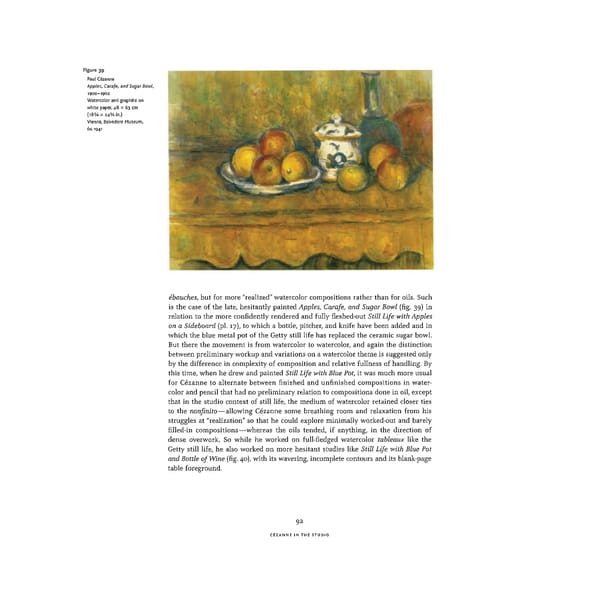Figure 39 Paul Cézanne Apples, Carafe, and Sugar Bowl, 1900-1902 Watercolor and graphite on white paper, 48 x 63 cm 3 3 (i8 /4 x 24 /4 in.) Vienna, Belvedere Museum, ÔG 1941 ébauches, but for more "realized" watercolor compositions rather than for oils. Such is the case of the late hesitantly painted Apples, Carafe, and Sugar Bowl (fig. 39) in ; relation to the more confidently rendered and fully fleshed-out Still Life with Apples on a Sideboard (pi. 17), to which a bottle, pitcher, and knife have been added and in which the blue metal pot of the Getty still life has replaced the ceramic sugar bowl. But there the movement is from watercolor to watercolor, and again the distinction between preliminary workup and variations on a watercolor theme is suggested only by the difference in complexity of composition and relative fullness of handling. By this time, when he drew and painted Still Life with Blue Pot, it was much more usual for Cézanne to alternate between finished and unfinished compositions in water- color and pencil that had no preliminary relation to compositions done in oil, except that in the studio context of still life, the medium of watercolor retained closer ties to the nonfinito—allowing Cézanne some breathing room and relaxation from his struggles at "realization" so that he could explore minimally worked-out and barely filled-in compositions—whereas the oils tended, if anything, in the direction of dense overwork. So while he worked on full-fledged watercolor tableaux like the Getty still life, he also worked on more hesitant studies like Still Life with Blue Pot and Bottle of Wine (fig. 40), with its wavering, incomplete contours and its blank-page table foreground. 92 CÉZANNE IN THE STUDIO
 Cézanne in the Studio: Still Life in Watercolors Page 106 Page 108
Cézanne in the Studio: Still Life in Watercolors Page 106 Page 108